Results
-
 £435.40
£435.40Goldberg 2012 - Svein H. Giske
The first time I heard Bach's Goldberg Variations was in the movie Silence of the lambs, in the early 1990s. I noticed the beautiful background music in one of the scenes, but at that time I didn't know what it was. A few years later, when I was studiying at the Grieg Academy, I got to know the entire piece. For me, this is a piece of music which I can listen to countless times. I think it sounds as fresh today as it did more than 15 years ago and it never ceases to inspire me. Both Bach's composition and Glenn Gould's famous 1955 recording (which was the first one I heard) still makes a great impression on me. Before Gould recorded it at age 22, it wasn't a highly ranked piece amongst pianists and Bach was by many viewed as a bit old-fashioned. The young Canadian turned all this around. He managed to portray Bach in a reformed way, producing fine nuances in phrasing and making the many layers in Bach's music more transparent than anyone before him. Thus he plunged both himself and Bach (back) onto the international music scene. When The Norwegian Band Federation (NMF) asked me to write the test piece for NM in 2012, it was only natural for me to use the Goldberg Variations as a starting point and inspiration for my work. Since I was a teenager at NMF's summer courses in the mid eighties I've always listened to many different styles of music. Growing up in Sunnmre with the Brazz Brothers as teachers and mentors, jazz-, pop/rock- and folk music were early on a natural part of my musical background. I also have my classical education from the Grieg Academy on trumpet. As the title of my piece implies, I've wanted to bring Bach to the present and put his music into various modern musical landscapes. I think you can bring about a special kind of energy when music from different genres are mixed and I've tried to do this by mixing Bach with artists and musical styles from the present. In Goldberg 2012, the music is often constructed by several layers, which in a way are living parallel musical lives. They are seemingly moving or floating freely, almost unaware of each other, but bound together by the same basic pulse. The rythms, however, are often notated on a different rythmic subdivision level than the usual 8th- or 16th note levels. By doing this, I hope to achieve transparent sounds that rythmically are perceived as more free and detached from each other. In large sections of the piece, pop/jazz is fusioned with elements from Bach. I guess you could have this little scene as a synopsis for the piece: picture a group of musicians meeting: some are classical performers, some are jazz. They start to improvise together, each in their own voice or musical dialect and I'm sort of in the middle, trying to write down what they are playing. This is what I feel much of Goldberg 2012 is about. The foundation of the piece, in addition to Bach and references from pop/jazz music, lies also in my own material. This material, basically two chords, is heard in it's purest form in the 1st movement. I use these chords to create scales, new chords and different motifs which contribute to blend together the different moods of the piece. It has not been my intention to copy Bach's form (theme and 30 variations), but rather to use the bits and pieces that I like the most as an inspiration for my own variations. The 1st movement, Aria 2, is for my 3rd son, Olav, who was born on the 21st of April 2011, and the 5th movement, From long ago, is dedicated to the memory of my father, Svein J. Giske, who passed away on the 6th of June 2011. -Svein H. Giske, January 2012-
Estimated dispatch 7-14 working days
-
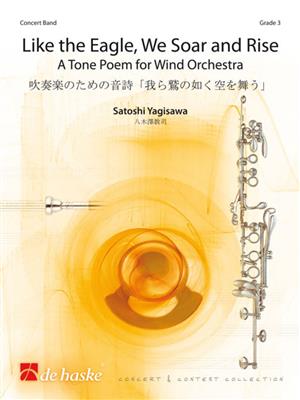 £144.99
£144.99Like the Eagle, We Soar and Rise - Satoshi Yagisawa
Like the Eagle, We Soar and Rise was commissioned by Yuying Secondary School Concert Band and Yuying Alumni Association for the 2010 centenary of the school's foundation. The piece was named by a friend of the composer named Steven Phua, who originally suggested commissioning a new piece to Satoshi Yagisawa. The piece furthermore takes its name from the text of the Yuying Secondary School song.This composition is based on three different concepts: the first one demonstrates 'The founders' passion for education'; the second concept illustrates 'Hardship in war time'; the third one 'To the future' describes the inner strength people find to overcome struggles. Thispiece concludes with a fanfare, which is the sound of hope that leads to a brighter future in a positive direction.The world premiere of this piece was conducted by Faizal Bin Othman, who is one of the leading educators in Singapore, and was performed by the Yuying Secondary School Concert Band.
Estimated dispatch 7-14 working days
-
 £159.99
£159.99The Miner's Saga - Otto M. Schwarz
This programmatic piece is about a simple miner by the name of Gottlieb Bumler and his pact with the devil. In the program note one can follow each step of the story so you can almost hear the events as if they were happening in front of you! This cinematic piece is full of sound effects, great brass sequences, solid percussion and virtuosic winds. An ideal piece for a thematic concert, or a challenging choice for a contest. This programmatic piece is about a simple miner by the name of Gottlieb Bumler and his pact with the devil. In the program note one can follow each step of the story so you can almost hear the events as if they were happening in front of you! Thiscinematic piece is full of sound effects, great brass sequences, solid percussion and virtuosic winds. An ideal piece for a thematic concert, or a challenging choice for a contest.
Estimated dispatch 7-14 working days
-
 £99.99
£99.99Marchissimo (Concert Band - Score and Parts) - Sparke, Philip
Marchissimo will make a fantastic opening piece for any concert. It does however come with a twist! It can be played simply as written, but is really designed to be staged with players coming on the concert platform one by one as they begin to play. The piece actually consists of three marches in one, each of which highlights a section of the band. The piece culminates in a final climax where all three march themes are played simultaneously.Duration: 4.30
Estimated dispatch 7-14 working days
-
 £174.99
£174.99The Golden City Wind Band Set (Score & Parts)
Prague, also named 'The Golden City', has been the cultural and administrative capital city of the Czech Republic for thousands of years. The city is beautifully situated on the river Moldau. Every year millions of tourists visit Prague. It is one of the most popular cities of Eastern Europe. With it's mysterious little squares, dark alley ways and cobblestone streets, the 'City of the 100 Towers' is a unique mixture of architecture, dominated by monumental buildings, numerous churches and the oldest castle of Europe. The Bohemian capital city remains timeless. Visit the fort and be amazed at the lovely views over the Charles Bridge. Spend your time carefully browsing through the little stalls filled with paintings, photos, jewelery and hand-decorated products, accompanied by the sounds of the street musicians in the background. Notice the famous 15 th century astronomical clock that indicates the time every hour with a parade of the twelve apostles. When composing this piece, it was Jan Bosveld's intention to depict the atmosphere of this metropolitan city with over one million inhabitants, rather than to create a fairly literal musical portrait. One of the many other names of Prague is 'The City of the Clocks'. This can be heard throughout the piece depicted by the tubular bells. The piece consists of three movements (slow-fast-slow) and was written in a rhapsodic format. Jan Bosveld was commissioned to write 'The Golden City' by the Dutch Music Lend and Information Centre (MUI), a department of the library for the province of Gelderland in Arnhem, the Netherlands. 14:30
Estimated dispatch 7-14 working days
-
£174.99
The Golden City - Jan Bosveld
Prague, also named 'The Golden City', has been the cultural and administrative capital city of the Czech Republic for thousands of years. The city is beautifully situated on the river Moldau. Every year millions of tourists visit Prague. It is one of the most popular cities of Eastern Europe. With it's mysterious little squares, dark alley ways and cobblestone streets, the 'City of the 100 Towers' is a unique mixture of architecture, dominated by monumental buildings, numerous churches and the oldest castle of Europe. The Bohemian capital city remains timeless. Visit the fort and be amazed at the lovely views over the Charles Bridge. Spend your time carefully browsing through the little stalls filled with paintings, photos, jewelery and hand-decorated products, accompanied by the sounds of the street musicians in the background. Notice the famous 15 th century astronomical clock that indicates the time every hour with a parade of the twelve apostles. When composing this piece, it was Jan Bosveld's intention to depict the atmosphere of this metropolitan city with over one million inhabitants, rather than to create a fairly literal musical portrait. One of the many other names of Prague is 'The City of the Clocks'. This can be heard throughout the piece depicted by the tubular bells. The piece consists of three movements (slow-fast-slow) and was written in a rhapsodic format. Jan Bosveld was commissioned to write 'The Golden City' by the Dutch Music Lend and Information Centre (MUI), a department of the library for the province of Gelderland in Arnhem, the Netherlands.
Estimated dispatch 7-14 working days
-
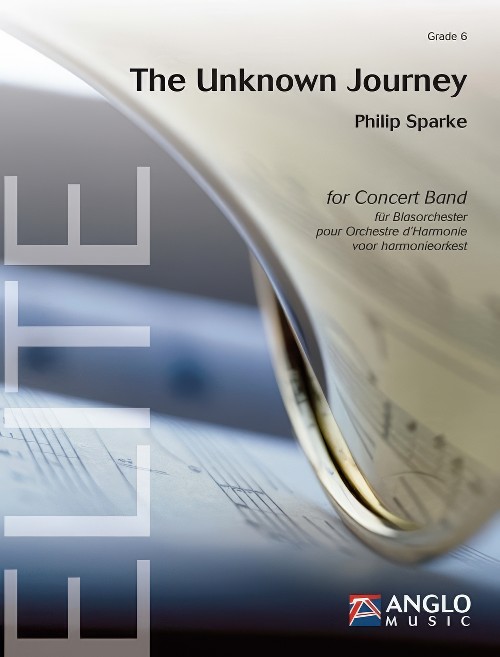 £256.99
£256.99The Unknown Journey (Concert Band - Score and Parts) - Sparke, Philip
The Unknown Journey was commissioned by Kwansei Gakuin University Symphony Band which was established in 1954 and has grown to become one of the top college bands in Japan. The composer chose the title as the piece seemed to create its own momentum as it developed, starting slowly and continuously increasing the tempo. Towards the end it gradually transmogrifies into the closing bars of Ravel's La Valse, a piece which perfectly characterises the idea of unstoppable momentum. The Unknown Journey was commissioned by Kwansei Gakuin University Symphony Band which was established in 1954 and has grown to become one of the top college bands in Japan. The composer chose the title as the piece seemed to create its own momentum as it developed, starting slowly and continuously increasing the tempo. Towards the end it gradually transmogrifies into the closing bars of Ravel's La Valse, a piece which perfectly characterises the idea of unstoppable momentum.Duration: 11:30
Estimated dispatch 7-14 working days
-
 £64.99
£64.99Heroic Tribute - James Curnow
The grand and energetic opening, contrasting styles, careful attention to articulations, and rich harmonies make this one sound more advanced than it actually is. Consider using Heroic Tribute as the opening piece for your young band festival performance. The easy but bright and colorful Percussion, along with excellent use of the Woodwind and Brass sections, make this an ideal contest piece. There are plenty of teaching opportunities packed into this majestic new mini-overture for young bands. In fact, even if your band usually plays higher grade level music you should still give this one serious consideration. Occasionally it's good idea to rehearse a high-quality easiercomposition, where your entire ensemble can concentrate fully on ensemble playing, phrasing, tone quality, etc. and not worry about just chasing notes. This piece provides great cross-curricular teaching opportunities with history.A great teaching piece as well as a gem in performance!
Estimated dispatch 7-14 working days
-
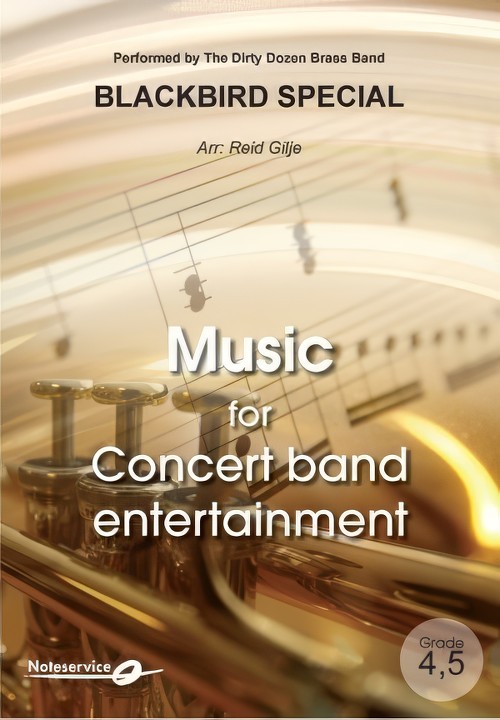 £143.00
£143.00Blackbird Special (Concert Band - Score and Parts) - Gilje, Reid
Blackbird Special is a song by American band Dirty Dozen Brass Band.The song is an entertainment piece, a good concert opener or encore. When used as a concert opener one may let the different sections of the band enter the stage one by one playing in order of appearance. Percussion section may play their parts ad lib. The most important is the groove of the piece.
Estimated dispatch 7-14 working days
-
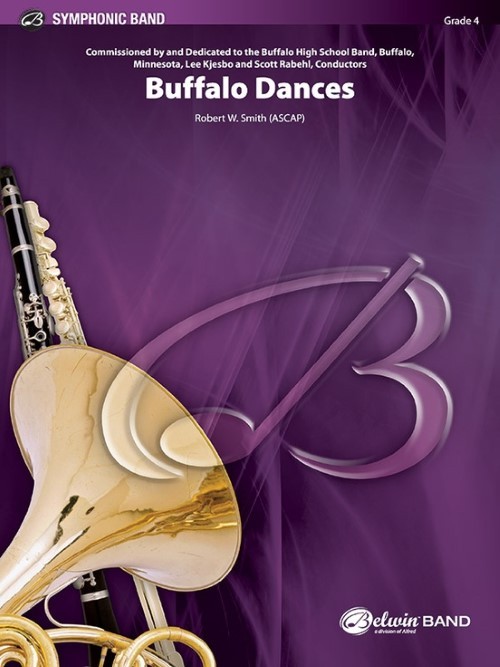 £84.50
£84.50Buffalo Dances (Concert Band - Score and Parts) - Smith, Robert W.
The lake region around Buffalo, Minnesota, is one of great geographic beauty and historic significance. Originally part of the region known as the Big Woods, the area was covered with hardwoods that were so thick in their overlapping branches, it was difficult to see the road ahead or sky above. The white elm trees grew to six feet in diameter and up to majestic heights of over one hundred feet.The Dakota People lived and prospered in this area between the lakes for 300 years. Buffalo was a favourite hunting and fishing ground for the Dakotas until the arrival of the first European fur traders and settlers. The richness of the natural resources served as a catalyst for modern development, which led to the very progressive region that continues to grow to this day.Buffalo Dances honours the natural beauty, Native-American heritage and the modern prosperity of Buffalo. Beginning with a majestic fanfare, the piece continues with flowing, Native-American inspired melodies over driving rhythmic figures. The centre of the piece is comprised of a simple original hymn song that reflects on the natural beauty of the region. Accompanied by the sounds of Native-American dance, the intensity returns. If one listens carefully the sound of snorting buffalo can be heard amid the festive atmosphere before the return of the concluding fanfare.
Estimated dispatch 7-14 working days
